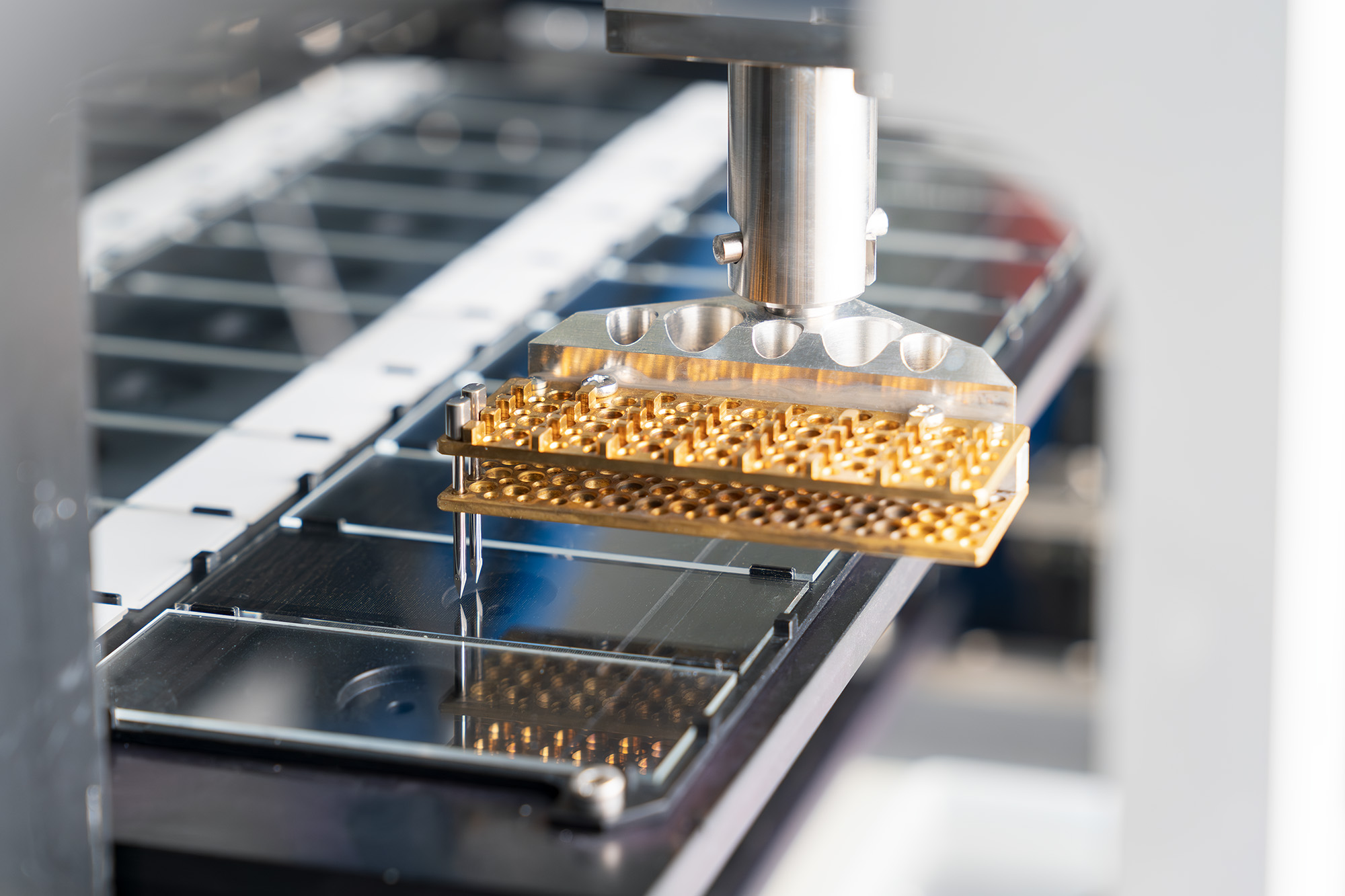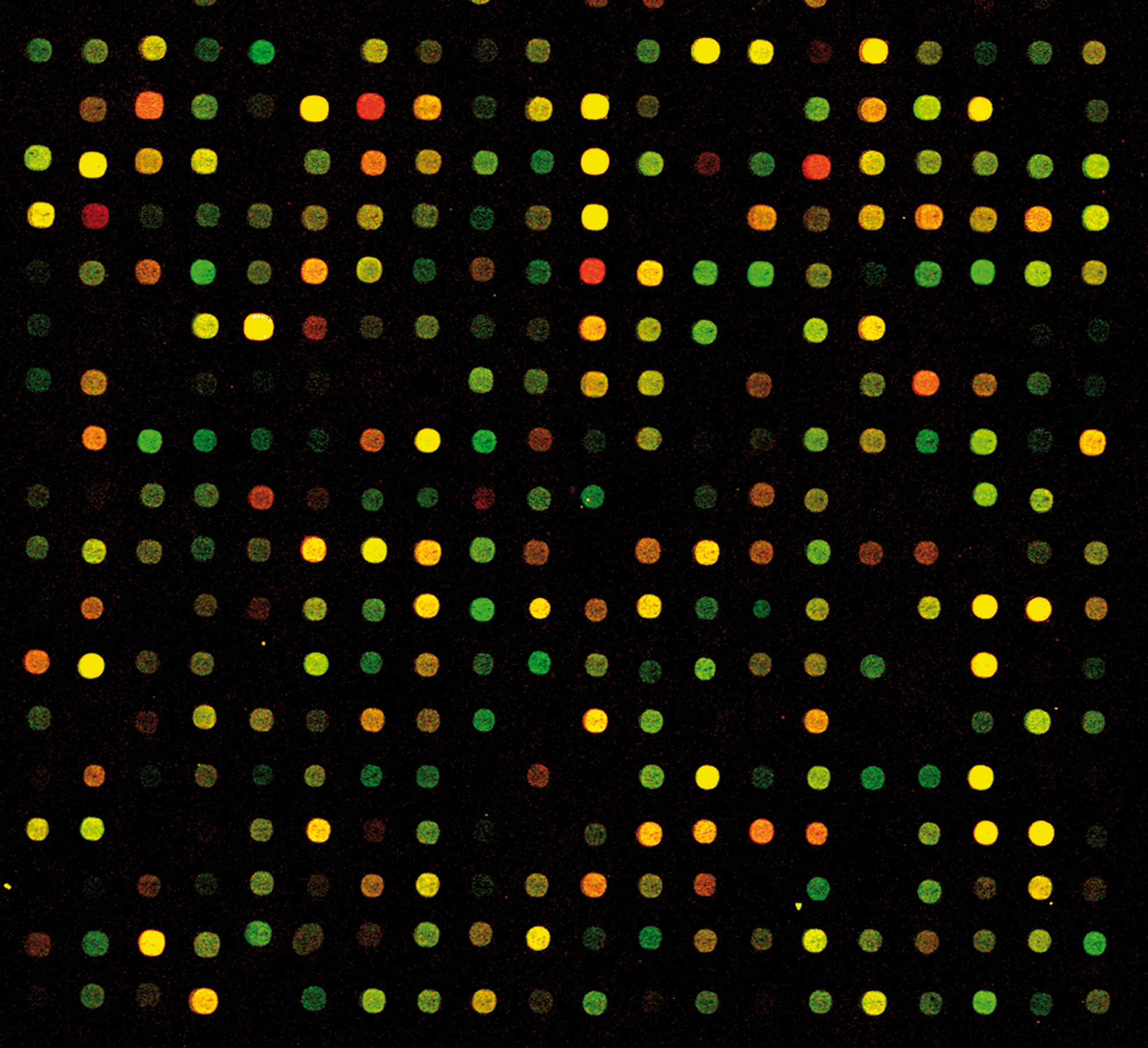The basic principle of a microarray or biochip is that DNA or protein molecules are fixed in an ordered fashion i.e. a defined sequence onto a solid support. For analyzing genes or genomes for example, complex samples are isolated from cells or tissues of interest, labeled and investigated using such a biochip.
Biochips enable the researcher to look at thousands of genes or proteins in parallel in a single experiment. The individual DNA or protein probes act as sensors to gain information about transcription, expression or mutations of the respective gene.
 Fraunhofer Institute for Interfacial Engineering and Biotechnology IGB
Fraunhofer Institute for Interfacial Engineering and Biotechnology IGB
